|
HOME: www.hiltonpond.org |
|||
|
THIS WEEK at HILTON POND 1-12 June 2011 Installment #513---Visitor # (Back to Preceding Week; on to Next Week) |
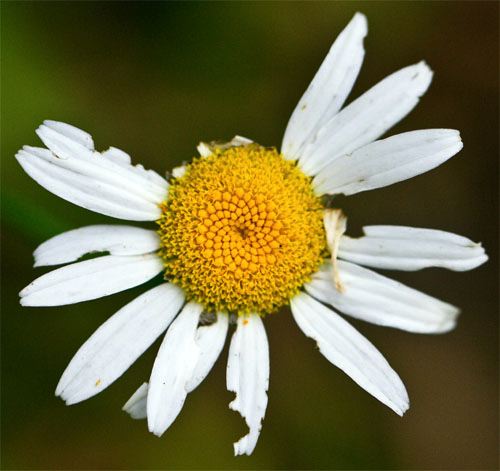
All text & photos © Hilton Pond Center A DAY IN THE DAISY PATCH: Nature photographers showcasing wildflower images typically select ideal subjects--symmetrical blooms with perfect petals in natural settings with the lighting "just right." If we use those criteria, the photo above is a sorry depiction of an Oxeye Daisy at Hilton Pond Center, but our image tells a much better story. This particular composite blossom--with its white sterile ray flowers (they're not petals) and fertile yellow disk flowers (where seeds are produced)--has been chewed and nibbled by any number of insects, so many we're guessing the photo wouldn't win any prizes at an art show. Looking at this tattered bloom through our camera lens this week provided the impetus for us to spend a day in the daisy patch--all in the hope of learning what critters might be hanging out as pollinators or petal-eaters.
All text & photos © Hilton Pond Center Oxeye Daisies, Chrysanthemum leucanthemum (AKA Leucanthemum vulgare, intact specimen above) are non-native wildflowers in the Composite Family (Asteraceae). The species was introduced accidentally from Europe long ago and is so widely distributed and well-liked people seldom think of it as an invasive plant. The entire flower head is typically no more than two inches in diameter, although all the daisies on this page were only about three-quarters that size; remembering this will help provide a sense of scale for the insects depicted below since most were scarcely one-eighth of an inch long! Insects--especially minuscule ones--are sometimes quite difficult to identify specifically but for each we have attempted to provide at least the family name (ending in "idae"). If you can go further--to genus or species for any of them--please send an e-mail with your insect ID to INFO.
All text & photos © Hilton Pond Center We waded into the daisy patch in early morning--the light was good then and it was much cooler than the predicted high of 98 degrees--and some of the flowers still had noticeable deposits of dew on their ray flowers. On one daisy we quickly spotted a tiny black beetle with many parallel fine grooves the length of its wing covers (above); it was the most common insect among the daisies and shows up in the background of several photos below. This little beetle also had a VERY long and decurved appendage jutting anteriorly from its head--a sure sign we were looking at one of the Snout Beetles, AKA Snout Weevils. (Curculionidae).
All text & photos © Hilton Pond Center Snout Weevils take their name from the unusually long rostrum (above) that allows them to get their chewing mouthparts into tight spaces on seeds and stems. The rostrum typically bears a pair of geniculate (L-shaped) antennae that are club-tipped. As beetles, Snout Weevils have two sets of wings, but the outer pair (the elytra) are hard and must be folded forward to allow hind wings to extend and provide flight. As a result, beetles--including weevils--are not among the most graceful of flyers and spend lots of time on various substrates, sometimes hiding beneath logs, leaf litter, etc. Our daisy-dwelling weevils--which we believe are from the subfamily of Tooth-nosed Snout Weevils (Rhynchitinae)--appeared to be eating pollen and/or nectar rather than nibbling on the flowers themselves. Beetles in this group typically lay eggs in fruits and nuts and plant buds.
All text & photos © Hilton Pond Center The next most common insects in our daisy patch were also beetles, but they obviously weren't weevils. Instead of a decurved rostrum they had a hunch-backed appearance caused by keeping their heads tucked down. What was most obvious on each, however, was a long pointed abdomen that stuck out well beyond the wing covers (above). This distinctive characteristic told us these dark little arthropods were Tumbling Flower Beetles in the Mordellidae.
All text & photos © Hilton Pond Center The Tumbling Flower Beetles are so-called because they tend to kick and tumble about in blossoms--especially, it seems, when a photographer is getting close enough to take a picture. Such behavior makes these beetles major pollinators of composite and umbelliferous flowers--even if they aren't as graceful in their pollination behavior as bees and wasps. Adults are almost always found on flowers, while mordellid larvae often live in plant pith and decaying wood.
All text & photos © Hilton Pond Center A third inch-long insect (above) we saw on the daisies was gargantuan compared to those Tumbling Flower Beetles and Snout Weevils but it, too, was a beetle--and a far more colorful one at that. This striking black and orange creature, we finally decided, must be one of the Longhorn Beetles (Cerambycidae); thanks to Bill Yule--he's a member of our "Nature Study Network" Yahoo! group--we now know it's Strangalia luteicornis, one of the Flower Longhorns (Lepturinae). Larvae of many Longhorn Beetles are wood-borers; some cause considerable damage to live trees or wooden structures.
All text & photos © Hilton Pond Center Our fourth insect (above) was dew-covered and again very small--only about an eighth of an inch in diameter; it was oval-shaped, quite dark, and with wing covers seeming to have small flanges on the sides and posterior edges. Our first thought was it one of the Tortoise Beetles, a confusing group that once was placed in the Chrysomelidae (Cassidinae) with the Leaf Beetles. Thanks to prompts from folks on the ENTOM-L listserve, we learned it wasn't a beetle after all but one of the Ebony Bugs (Hemiptera/Heteroptera: Thyreocoridae)--whose wings hang out a little and form what we thought were flanges. In these true bugs the scutellum is huge and covers the entire back; Ebony Bugs eat seeds, stems, and leaves and may have been responsible for consuming some of the daisy ray flowers.
All text & photos © Hilton Pond Center We were a bit surprised when we started looking closely at our daisies to find a couple of kinds of miniature caterpillars on the flower heads (above and below). Each was less than an inch long and held tightly to its home daisy with a pair of flared anal prolegs (false feet) at their posterior ends. So anchored, the caterpillars could freely move their anterior ends. We watched for a long time but couldn't determine for sure whether they were taking nectar or pollen or eating plant parts, but it seems likely these larvae would serve as pollinators.
All text & photos © Hilton Pond Center We're guessing each caterpillars was some sort of inchworm or looper, produced by a Geometrid moth. However, caterpillars are also notoriously difficult to identify, especially because many acquire different colors and patterns as they proceed through various stages of development.
All text & photos © Hilton Pond Center As we were trying to photograph one caterpillar, an insect we recognized at least to family level flew into view and sat on a daisy ray flower. When it first landed its two wings were held straight out from its sides and in perfectly horizontal configuration; this is a typical posture for the so-called Hoverflies or Flower Flies--more accurately known as Syrphid Flies (Syrphidae). Hoverflies deserve their name and their ability to hover in one place before darting to another hoverspot is delightful behavior; many times we've gone eyeball to compound eye with a Hoverfly as it hung in midair in front of us. After landing, the syrphid on the daisy turned 180 degrees and folded its wings so they were parallel to its body; the fly then seemed to stare at us (or the camera lens) with its big red eyes. As might be expected of insects with an alternate name of "Flower Flies," adult syrphids spent lots of time nectaring from and, by default, pollinating flowers. Some adult syrphids also eat aphids, while their larvae consume everything from decaying plant matter to other insects.
All text & photos © Hilton Pond Center Another small insect that moved past our lens was an unidentified ant (above) that may merely have been out exploring as it walked across a daisy's golden center--ignoring and passing a couple of those nearly ubiquitous Snout Weevils. This little six-legger paused only briefly and didn't appear to sample any nectar; even so, that it wandered from one flower to the next meant it easily could have picked up a pollen grain or two and assisted with the daisy's need for cross-pollination.
All text & photos © Hilton Pond Center Perhaps our favorite discovery in the daisy patch were long-legged insects with even longer antennae. Several flower heads had one each of these pint-sized jump-capable critters, which we recognized as nymphs of one of Scudder's Bush Katydids, Scudderia spp. These so-called "false katydids" are in the Tettigoniidae (Phaneropterinae) and lead a solitary existence, never forming into plague assemblages like their relatives the grasshoppers and locusts. Antennae on all the immature katydids were strikingly banded in black and white; it may be such contrasting visible colors attract the attention of potential predators that get a mouthful of antenna rather than the nymph itself. In green vegetation the bush katydid would be well-camouflaged, but on yellow-and-white daisies it stood out like a sore thumb. Although we visited the daisy patch several other days this week we found no new species of insects, and we never were able to conclusively determine what was eating the ray flowers. (Nocturnal slugs, perhaps?) Regardless, we were intrigued by the variety of invertebrates in our little patch of Oxeye Daisies and encourage you to visit your local wildflower meadow to see what sorts of pollinators and petal-eaters you might find there. |
 The Piedmont Naturalist, Volume 1 (1986)--long out-of-print--has been re-published by author Bill Hilton Jr. as an e-Book downloadable to read on your iPad, iPhone, Nook, Kindle, or desktop computer. Click on the image at left for information about ordering. All proceeds benefit education, research, and conservation work of Hilton Pond Center for Piedmont Natural History. The Piedmont Naturalist, Volume 1 (1986)--long out-of-print--has been re-published by author Bill Hilton Jr. as an e-Book downloadable to read on your iPad, iPhone, Nook, Kindle, or desktop computer. Click on the image at left for information about ordering. All proceeds benefit education, research, and conservation work of Hilton Pond Center for Piedmont Natural History. |
|
|
"This Week at Hilton Pond" is written and photographed by Bill Hilton Jr., executive director of Hilton Pond Center for Piedmont Natural History
|
|
|
If you Twitter, please refer
"This Week at Hilton Pond" to followers by clicking on this button: Tweet Follow us on Twitter: @hiltonpond |
Comments or questions about this week's installment? Send an E-mail to INFO. (Be sure to scroll down for a tally of birds banded/recaptured during the period, plus other nature notes.) |
|
--SEARCH OUR SITE-- For a free on-line subscription to "This Week at Hilton Pond," send us an |
|
Thanks to the following fine folks for recent gifts in support of Hilton Pond Center for Piedmont Natural History and/or Operation RubyThroat: The Hummingbird Project. Your tax-deductible contributions allow us to continue writing, photographing, and sharing "This Week at Hilton Pond." Please see Support if you'd like to make a gift of your own.
|
|
Make credit card donations
on-line via Network for Good: |
|
|
Use your PayPal account
to make direct donations: |
|
|
If you like shopping on-line please become a member of iGive, through which 800+ on-line stores from Amazon to Lands' End and even iTunes donate a percentage of your purchase price to support Hilton Pond Center .
 Every new member who registers with iGive and makes a purchase earns an ADDITIONAL $5 for the Center. You can even do Web searches through iGive and earn a penny per search--sometimes TWO--for the cause! Please enroll by going to the iGive Web site. It's a painless, important way for YOU to support our on-going work in conservation, education, and research. Add the iGive Toolbar to your browser and register Operation RubyThroat as your preferred charity to make it even easier to help Hilton Pond Center when you shop. Every new member who registers with iGive and makes a purchase earns an ADDITIONAL $5 for the Center. You can even do Web searches through iGive and earn a penny per search--sometimes TWO--for the cause! Please enroll by going to the iGive Web site. It's a painless, important way for YOU to support our on-going work in conservation, education, and research. Add the iGive Toolbar to your browser and register Operation RubyThroat as your preferred charity to make it even easier to help Hilton Pond Center when you shop. |
|
|
SPECIES BANDED THIS WEEK: * = New species for 2011 WEEKLY BANDING TOTAL 10 species 44 individuals 2011 BANDING TOTAL 23 species 1,487 individuals 5 Ruby-throated Hummingbirds 30-YEAR BANDING GRAND TOTAL (since 28 June 1982, during which time 170 species have been observed on or over the property) 125 species (30-yr avg = 66.9) 56,364 individuals (30-yr avg = 1,879) NOTABLE RECAPTURES THIS WEEK (with original banding date, sex, and current age): Ruby-throated Hummingbird (1) 07/25/10--after 2nd year female American Goldfinch (2) Carolina Chickadee (2) Northern Cardinal (4) Eastern Tufted Titmouse (2) Carolina Wren (2) FOREIGN ENCOUNTER THIS WEEK We heard this week from the federal Bird Banding Laboratory that a male House Finch of unknown age banded locally on 30 Dec 2010 was found dead just five months later on 24 May 2011 at Belmont NC, about 30 miles north of Hilton Pond Center. We thank George Hall for filing his recovery report via the BBL's toll-free number: (800) 327-BAND. (We also thank BBL wildife data assistant Carolyn Parker for letting us know so quickly about this bird, only our 56th out-of-state foreign encounter in 30 years of banding at the Center.) See our complete list of Foreign Encounters. |
OTHER NATURE NOTES: --We were pleased this week to speak about our hummingbird and plant-animal interaction research for the annual Millersville University native plant conference in Millersville PA. --A real frogstrangler hit Hilton Pond Center on the evening of 5 Jun, with a half-inch of rain in less than five minutes. Eventual total for the 90-minute thunderstorm was 2.24" and the pond itself came up 4". Very strong wind gusts battered our trees and created an amazing amount of leaf and stick litter; one towering Sweetgum rotten at its base snapped off at ground level and fell into Hilton Pond's backwaters. Tops were broken out of several other Sweetgums in unprotected areas along a blacktop road that borders the property. --A Louisiana Waterthrush netted on 6 Jun was only our 44th since 1982 at the Center. That it was a recent fledgling indicates the species is breeding locally. A male Northern Parula on 8 Jun was our 61st.
All text & photos © Hilton Pond Center --And speaking of daisies, son Garry Hilton has a Miniature Schnauzer named "Daisy" (above, from her puppy days) that last week apparently got into some poisonous mushrooms--possibly at Hilton Pond Center. She became nauseous and would not eat or drink, rapidly became weaker, and required emergency hospitalization that included plasma injections, catheters, IVs, and force feeding. Her liver essentially failed and her skin turned yellow before days of intensive care by a veterinary team brought her back from the brink. We think Daisy will be okay and offer this account as a caution that folks be careful about what their pets might be eating when out-of-doors. By all means, keep 'em away from mushrooms. |


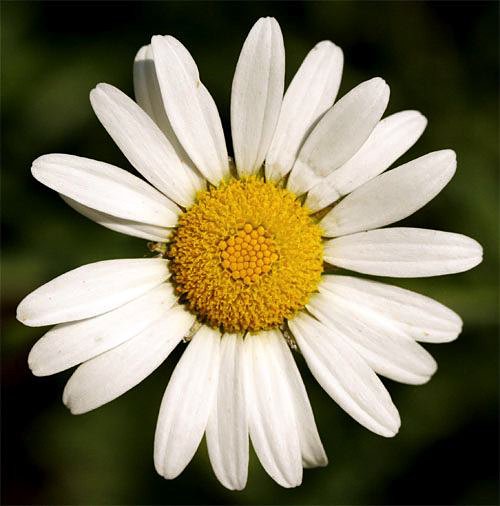

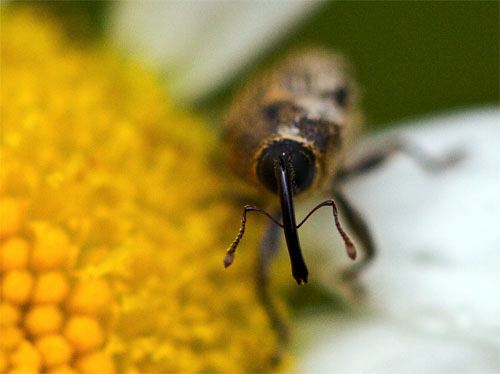
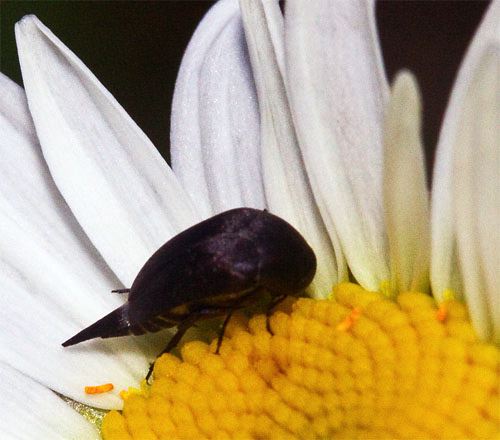
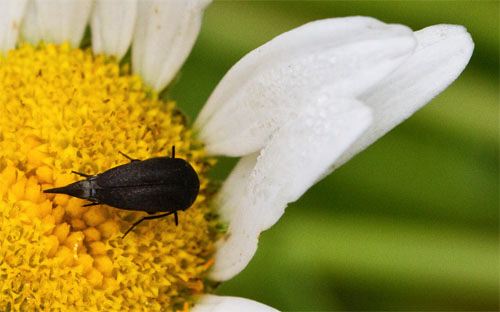
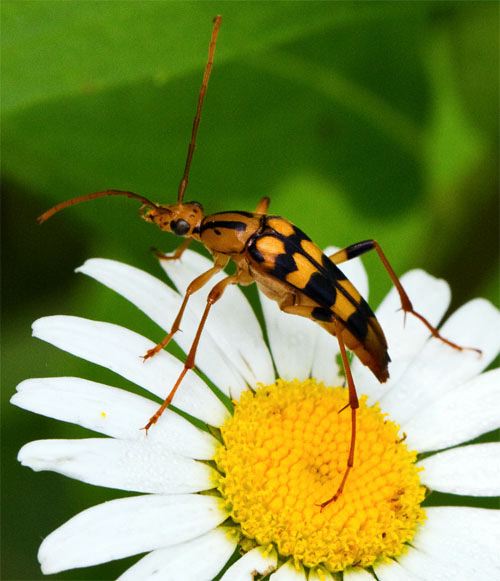

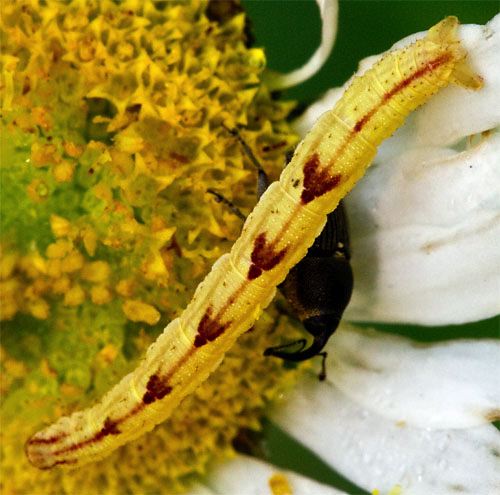

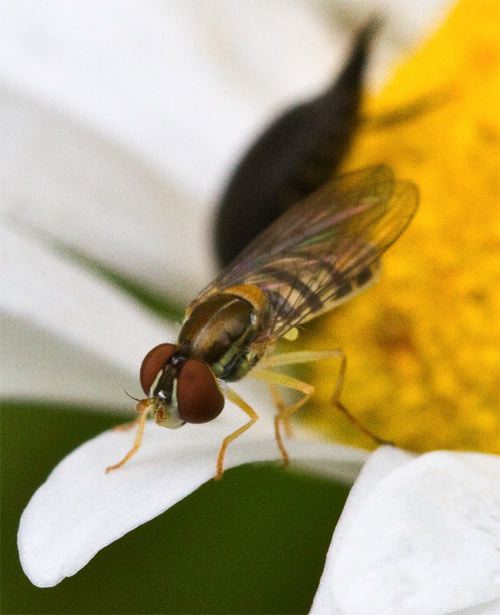
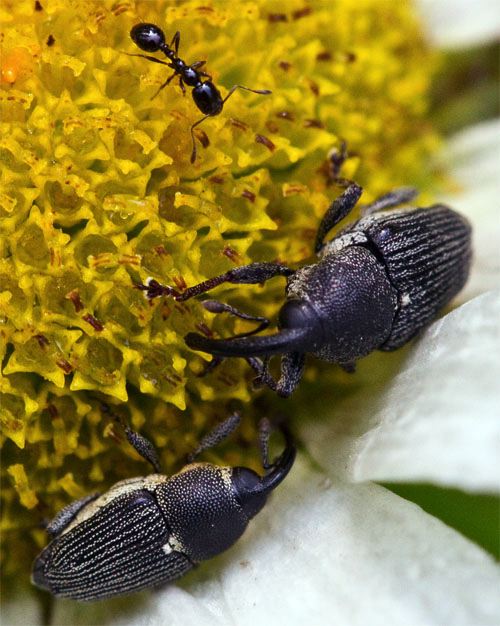



 Please report your
Please report your